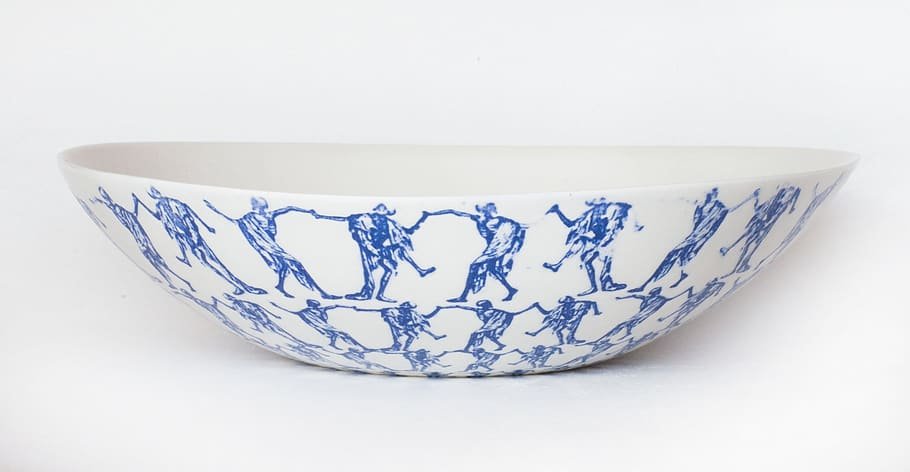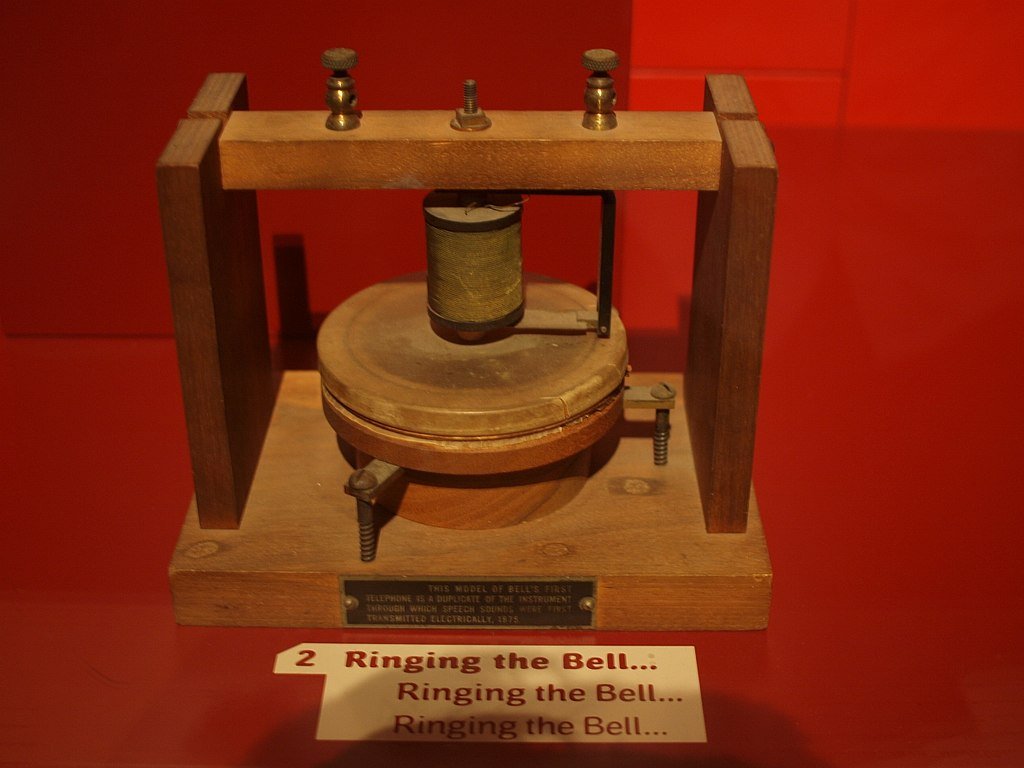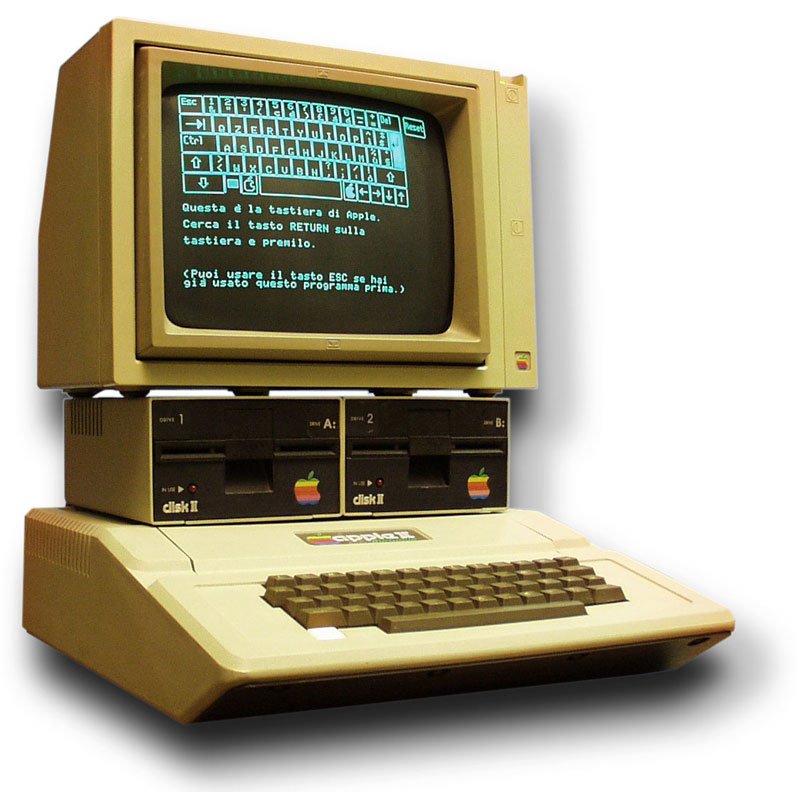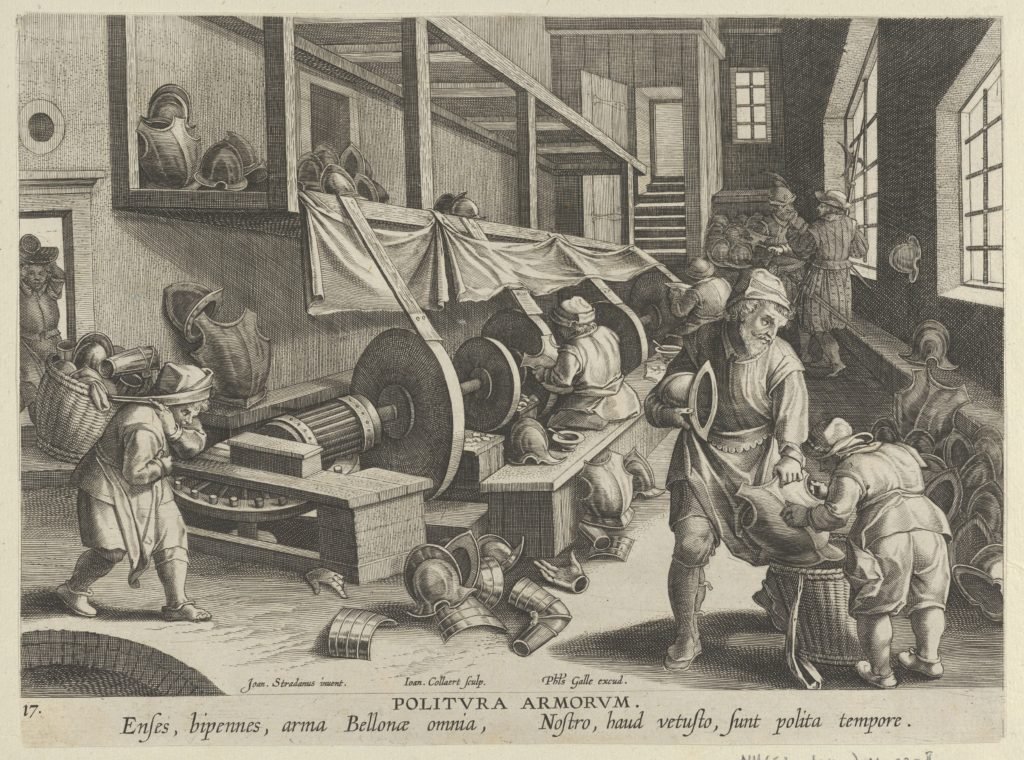China’s rich history is steeped in tradition and culture and marked by a remarkable legacy of inventions and technological advancements. The world owes much of its progress to the ingenuity and creativity of Chinese inventors. From ancient times to the modern era, Chinese inventions have played a pivotal role in shaping the course of human civilization.
Chinese inventions encompass a wide spectrum of innovations that have profoundly impacted various aspects of life. Chinese Inventions conjures images of paper, gunpowder, the compass, and silk, each revolutionizing their respective fields. These inventions have not only transformed China but have transcended borders, influencing societies across the globe.
China’s history is a testament to the nation’s commitment to pushing the boundaries of knowledge and technology. From early discoveries in medicine and engineering to more recent breakthroughs in digital technology and space exploration, Chinese technology continues to evolve, positioning China as a global leader in innovation.
In exploring Chinese inventions and technology, we will journey through time to uncover these remarkable creations’ origins, significance, and enduring impact. Join us as we delve into the world of Chinese inventions to appreciate the genius that has shaped our world as we know it today.
Table of Contents
Is China a superpower country?

China is widely recognized as a rising global superpower. It has made significant economic, political, and military advancements over the past few decades, positioning itself as one of the most influential countries in the world.
Economically, China boasts the world’s second-largest economy, a rapidly expanding middle class, and is a major player in international trade and investment. It has initiated large-scale infrastructure projects like the Belt and Road Initiative, enhancing its economic reach globally.
Politically, China wields substantial diplomatic influence, participating in international organizations and treaties and taking on a prominent role in addressing global challenges such as climate change and peacekeeping efforts.
China has modernized its armed forces, developing advanced capabilities in cyber warfare, space exploration, and naval strength. This military expansion has solidified its regional dominance in the Asia-Pacific.
However, it’s important to note that “superpower” is often used to describe countries with global economic and military influence, like the United States. While China is undoubtedly a major global player, the status of being a full-fledged superpower, equal to the U.S., is still a matter of ongoing debate among experts. Developments beyond my last knowledge update may have further shaped this assessment.
How advanced is China’s technology?
China has made significant strides in technology and innovation, establishing itself as a major player on the global tech stage. The country has rapidly evolved into a tech powerhouse, excelling in various fields.
5G Technology
China has been at the forefront of 5G technology development and deployment. Chinese telecom companies like Huawei and ZTE have played a pivotal role in advancing global 5G networks.
Artificial Intelligence (AI)
China is aggressively investing in AI research and development. Companies like Baidu, Tencent, and Alibaba lead the way in AI applications, from facial recognition to autonomous vehicles.
Quantum Computing
China is actively researching and developing quantum computing technology to achieve quantum supremacy. The country’s Quantum Experiments at Space Scale (QUESS) satellite is pioneering in this field.
Space Exploration
China has made significant strides in space exploration. The Chang’e missions to the Moon and Mars and its space station’s development demonstrate China’s commitment to advancing space technology.
High-speed Rail
China boasts one of the world’s most extensive high-speed rail networks, revolutionizing transportation.
E-commerce and FinTech
Companies like Alibaba and Tencent have transformed e-commerce and financial technology, making China a leader in digital payment systems.
Renewable Energy
China is a major player in renewable energy, with massive investments in solar, wind, and hydroelectric power.
Biotechnology
China is rapidly advancing in biotechnology, with significant developments in gene editing and pharmaceuticals.
Manufacturing and Robotics
Chinese industries are increasingly automated with robotics and advanced manufacturing techniques.
China’s technology advancements are characterized by their scale and speed. While they have made remarkable progress, they also face challenges such as intellectual property concerns and questions about data privacy. Nonetheless, China’s technological capabilities continue to grow, impacting its economy and the global tech landscape.

Chinese Inventions That Shaped the World
China has a rich history of inventions and innovations have significantly impacted the world. Here are some of the major inventions that originated in China:
Papermaking
Cai Lun, a eunuch in the imperial court of Emperor He of the Eastern Han Dynasty, is renowned for his groundbreaking invention of paper around 105 AD. This invention marked a pivotal moment in the history of human communication and has had a profound and enduring impact on the world.
Before the invention of paper, various materials, such as bamboo strips, silk, and animal skins, were used for writing. Still, they were relatively expensive, cumbersome, and needed more versatility of paper. Cai Lun’s invention revolutionized the process of recording and transmitting information. Paper was more affordable, lightweight, and conducive to mass production, making it accessible to a broader segment of society.
The widespread adoption of paper facilitated the spread of knowledge, culture, and literature. It played a pivotal role in developing art, science, and education, eventually leading to the creation of books, newspapers, and the modern printing press. Cai Lun’s invention laid the foundation for the information age, fostering the exchange of ideas and contributing to the advancement of civilizations worldwide.
Printing
Woodblock printing, a seminal innovation in the history of printing, was first developed in China around the 9th century during the Tang Dynasty. This technique involved carving characters or images onto wooden blocks, which were inked and pressed onto paper or fabric. Woodblock printing enabled the mass production of books, art, and texts, transforming how knowledge and culture were disseminated.
However, in the 11th century, during the Song Dynasty, China made another monumental contribution to printing technology with the invention of movable type. Bi Sheng, a Chinese artisan, is credited with this advancement. The movable type allowed individual characters to be rearranged and reused, making printing more versatile and efficient.
While woodblock printing was labor-intensive and suited for short print runs, movable printing paved the way for the mass production of books, profoundly impacting education, communication, and the spread of ideas. This Chinese innovation laid the foundation for Gutenberg’s printing press in Europe, marking a pivotal moment in human communication and knowledge dissemination history.

Gunpowder
Gunpowder, a groundbreaking invention often attributed to Chinese alchemists around the 9th century, is a testament to the serendipitous nature of scientific discovery. Initially formulated to pursue an elixir for immortality, alchemists inadvertently stumbled upon this potent mixture of sulfur, charcoal, and saltpeter (potassium nitrate).
Although gunpowder’s quest for immortality proved fruitless, its discovery would have profound and lasting consequences. Initially referred to as a “fire drug” (huoyao), it was soon recognized for its explosive properties. This transformative revelation led to the development of early firearms and explosive weapons, revolutionizing warfare worldwide.
Furthermore, gunpowder’s influence extended far beyond the battlefield. It played a pivotal role in the evolution of fireworks, transforming them from simple incendiary devices into dazzling displays of color and light that continue to captivate audiences worldwide today.
In essence, gunpowder’s journey from a misguided elixir to a powerful weapon and a source of celebration showcases the unpredictable nature of scientific innovation and its ability to shape human history in ways that its initial creators could never have imagined.
Compass
The invention of the compass during the Han Dynasty in the 2nd century BC stands as a pivotal moment in human history, particularly in maritime exploration. Originally a lodestone or magnetized iron spoon placed on a floating platform, the compass revolutionized how sailors and explorers navigated the vast oceans.
Before the compass, seafaring relied heavily on landmarks, stars, and dead reckoning, making long journeys across the open sea challenging and complex. The compass gave sailors a reliable tool to determine their direction even when out of sight of land. This innovation not only made navigation more accurate but also significantly expanded the horizons of maritime exploration.
The compass played a crucial role in the Age of Exploration, enabling European explorers like Christopher Columbus to venture into uncharted waters and discover new lands. It also facilitated trade along established routes like the Silk Road, contributing to cultural exchange and economic growth.
In essence, the compass was a cornerstone of global exploration, trade, and the exchange of ideas, making it one of the most influential inventions in human history. Its legacy endures in modern navigation technology, where it has evolved into highly sophisticated instruments used in aviation, space exploration, and more.
Paper Money
The introduction of paper money during the Tang Dynasty in 7th-century China marked a pivotal moment in the history of economics and finance. This innovative concept, initially developed as a response to the practical difficulties of carrying heavy metal coins, revolutionized trade and commerce in several ways.
Firstly, paper money greatly simplifies transactions. Unlike metal coins, it was lightweight and easy to transport, making it more convenient for merchants and traders. This increased the efficiency of trade routes and facilitated long-distance commerce along the Silk Road and other trading networks.
Secondly, paper money reduced the risk associated with carrying valuable metal currency. In an era plagued by banditry and theft, individuals could deposit their valuable metals with trusted institutions and receive paper money in exchange, reducing the risk of loss or theft.
Additionally, the issuance of paper money by central authorities, such as the government or banking institutions, helped standardize currency and stabilize economies. It enabled better control over the money supply, inflation, and interest rates, laying the foundation for modern monetary systems.
To summarize, the introduction of paper money during the Tang Dynasty simplified trade and commerce and laid the groundwork for modern financial systems, making it one of the most significant developments in economic history.

China’s development of high-quality porcelain, commonly referred to as “china,” during the Tang Dynasty (618–907 AD) was a momentous milestone in the history of ceramics. This remarkable invention, characterized by its exquisite craftsmanship, translucent appearance, and durability, revolutionized the art of pottery and profoundly impacted domestic and international trade.
Porcelain
Porcelain production in China represented a fusion of artistic and technological excellence. Chinese artisans mastered the art of blending specific clay compositions and firing techniques, resulting in ceramics that were not only aesthetically pleasing but also functional. This fine porcelain quickly symbolized wealth, luxury, and cultural refinement.
The impact of Chinese porcelain extended far beyond the borders of China. Its desirability among foreign elites and merchants led to the establishment of the Silk Road, a network of trade routes connecting China to Europe. Along these routes, porcelain was traded for various goods, including spices, textiles, and precious metals, facilitating cultural exchange and economic growth.
Chinese porcelain remains an enduring testament to the ingenuity and craftsmanship of the Tang Dynasty and continues to be celebrated as a pinnacle of ceramic artistry worldwide. Its legacy persists in museums, collections, and the hearts of admirers of fine craftsmanship and historical significance.
Silk
The production of silk, derived from silkworms, is one of ancient China’s most revered and influential achievements. Dating back 5,000 years, the sericulture industry became synonymous with Chinese culture and innovation. The legend of the discovery of silk production is attributed to Empress Leizu, who, according to myth, found silkworms spinning their cocoon while sipping tea beneath a mulberry tree.
Silk was more than a luxurious fabric; it symbolized prestige and wealth. Its soft, shimmering texture and vibrant colors captivated the world, making it a highly sought-after commodity. The demand for silk was so high that it catalyzed the creation of the Silk Road, a vast network of trade routes connecting China to Europe and other regions. This exchange facilitated the flow of silk and cultural, technological, and economic exchanges between civilizations.
China’s monopoly on silk production was closely guarded for centuries. Still, eventually, the secret of sericulture spread to other parts of the world, contributing to the globalization of trade and cultural diffusion. The legacy of Chinese silk production endures today, reminding us of the profound impact of this ancient innovation on global commerce and culture.

Tea
The cultivation and preparation of tea in China have a history that spans thousands of years, making it an integral part of Chinese culture and heritage. The story of tea dates back to ancient times, with legendary tales of Emperor Shen Nong discovering tea’s medicinal properties around 2737 BC. Over centuries, tea evolved from primarily consumed for its health benefits to becoming essential to social, cultural, and even spiritual life in China.
Chinese tea culture embodies a deep appreciation for tea-making, with various rituals, ceremonies, and traditions. This includes the famous Gongfu tea ceremony, where the preparation and presentation of tea are highly ritualized and precise.
The global spread of tea culture can be traced back to China’s Silk Road, where tea was traded along with other goods, introducing it to neighboring regions and eventually to the world. Today, tea is one of the most widely consumed beverages globally, with diverse variations and traditions influenced by China’s rich tea heritage. From Japanese matcha ceremonies to British afternoon tea, the global tea culture originates from the timeless traditions that began in China.
Seismoscope
Zhang Heng, a brilliant Chinese polymath who lived during the Eastern Han Dynasty (78-139 AD), is renowned for his groundbreaking invention of the seismoscope. This device marked a significant milestone in earthquake detection and measurement.
Zhang Heng’s seismoscope was a marvel of ancient engineering and scientific insight. It consisted of a large bronze urn with eight dragon heads, each positioned in a different direction. Beneath each dragon’s mouth was a bronze ball, and surrounding the urn were eight bronze toads with their mouths open to receive the balls. When an earthquake occurred, the seismoscope would detect the tremors and cause a mechanism inside to release a ball from one of the dragon’s mouths. This indicated the direction of the seismic activity and provided a rough estimate of its intensity.
This remarkable invention showcased Zhang Heng’s profound understanding of hydraulics and the principles of gravity, and it demonstrated his early recognition of the need for scientific instruments to monitor natural phenomena. Although the seismoscope wasn’t widely adopted, it remains a testament to Zhang Heng’s scientific understanding and innovation, representing an essential chapter in the history of earthquake detection technology.
Abacus
The abacus, an ingenious calculating device, is a testament to China’s historical contributions to mathematics and innovation. Developed in ancient China, it has been integral to the country’s cultural and scientific heritage for centuries. The abacus consists of a rectangular frame with rows of beads or counters that can be manipulated to perform arithmetic calculations with remarkable speed and accuracy.
Its enduring popularity can be attributed to its simplicity and effectiveness in various mathematical operations, making it an essential tool for merchants, scholars, and engineers. The abacus has been pivotal in facilitating trade and commerce and advancing mathematical understanding and problem-solving skills among generations of Chinese learners.
While modern digital calculators and computers have largely replaced the abacus in daily life, they still hold a revered place in Chinese culture as a symbol of mathematical prowess and cultural heritage. Moreover, it serves as a reminder of the foundational contributions that Chinese innovations have made to mathematics and technology.

Kite
Kites, whose origins date back over two millennia in China, have a rich and multifaceted history reflecting this ancient civilization’s ingenuity and cultural significance. Initially conceived for practical purposes, kites were employed for military signaling and meteorological observations.
In ancient China, kites were valuable tools for transmitting messages across vast distances during warfare. They were used to send signals, measure distances, and assess wind conditions, contributing to strategic advantages on the battlefield.
Over time, however, kites transcended their military utility to become cherished recreational pastimes. The Chinese people developed an artistic flair for kite design and construction, crafting intricate and visually captivating designs. These aerial marvels evolved into symbols of cultural expression, with festivals and competitions celebrating the beauty and skill of kite flying.
Today, the legacy of Chinese kites endures in China and globally, where kite-flying has become a cherished recreational activity and an art form. Kites serve as a reminder of China’s rich history of invention and its ability to transform utilitarian creations into enduring cultural traditions.
Suspension Bridge
Ancient Chinese engineers were pioneers in bridge construction, employing ingenious techniques to create remarkable suspension bridges that were monumental engineering achievements of their time. These early bridges, constructed using a combination of iron chains and bamboo ropes, served as vital lifelines, enabling the transportation of people and goods across challenging terrains.
The key innovation in these bridges was the use of iron chains, which provided structural stability and strength. In contrast, bamboo ropes were used for their flexibility and ability to absorb shock and distribute loads. This combination allowed the bridges to span wide gorges and rivers, offering safe passage even in treacherous conditions.
These early suspension bridges showcased the Chinese engineers’ deep understanding of materials and structural mechanics. Their legacy is a testament to the ancient Chinese’s commitment to innovation and their ability to create an enduring infrastructure that facilitated trade and connectivity and laid the foundation for future advancements in bridge construction and engineering worldwide.
Acupuncture
Traditional Chinese Medicine (TCM) is a holistic system of healthcare that has been practiced for thousands of years. One of its most well-known and distinctive therapies is acupuncture. This ancient practice involves the precise insertion of thin needles into specific points on the body, known as acupuncture points or meridians.
The underlying principle of acupuncture is the concept of Qi (pronounced “chee”), which is believed to be the vital life force that flows through the body’s meridians. When the flow of Qi is disrupted or blocked, it can lead to illness or pain. Acupuncture seeks to restore the balance of Qi within the body.
Acupuncture alleviates various health issues, including chronic pain, stress, anxiety, and digestive disorders. It is often used as a complementary therapy alongside conventional medicine. The insertion of needles stimulates the release of endorphins and other natural pain-relieving substances, promoting relaxation and overall well-being.
TCM practitioners undergo extensive training to understand the intricate network of meridians and the appropriate placement of needles. While it is deeply rooted in tradition, acupuncture continues to be researched and integrated into modern healthcare practices worldwide, highlighting its enduring significance in the quest for holistic healing.
Magnetic Compass
In addition to its pivotal role in navigation, the magnetic compass found diverse and profound applications in various aspects of Chinese culture, science, and philosophy, notably in astronomy and Feng Shui.
- Astronomy
The introduction of the magnetic compass significantly enhanced Chinese astronomy. It allowed astronomers to determine the cardinal directions, aiding in celestial observations more accurately. This, in turn, contributed to the development of more precise calendars and improved understanding of celestial phenomena such as eclipses and the positions of stars and planets. The compass became an indispensable tool for early astronomers in charting the heavens.
- Feng Shui
Feng Shui, the ancient Chinese art of harmonizing one’s environment, heavily relies on the magnetic compass. Practitioners use the compass, often called a Luo Pan, to determine buildings’ orientation and surroundings. By aligning structures with auspicious directions, practitioners believe they can harness positive energy (Qi) and promote well-being, prosperity, and harmony. The compass played a pivotal role in shaping the layout and design of buildings and cities across China, reflecting the deep-rooted belief in Feng Shui principles.

Fireworks
The invention of gunpowder, a Chinese creation, marked a pivotal moment in human history. While initially discovered for medicinal and alchemical purposes, its transformative potential was soon realized. One of the most captivating and enduring applications of gunpowder is the creation of fireworks.
Fireworks, with their breathtaking displays of color, light, and sound, have been used for centuries in celebrations and festivals worldwide. They represent not only the cultural richness of China but also the universality of joy and awe that they inspire.
In China, fireworks have deep-rooted traditions, especially during the Lunar New Year and other important festivals. They are believed to ward off evil spirits with loud noises and bright flashes while symbolizing good fortune and happiness.
Beyond China, fireworks have become integral to global festivities, including Independence Day celebrations in the United States, New Year’s Eve worldwide, and various religious and cultural festivals. They serve as a testament to the enduring legacy of Chinese ingenuity and their ability to unite people in celebration, regardless of cultural or geographical boundaries. Fireworks light up the night sky, creating moments of wonder and unity for people of all backgrounds.
It is crucial to recognize that the inventions from China have had a profound and far-reaching impact on human civilization, extending well beyond China’s borders. These innovations have transcended geographical boundaries, leaving an indelible mark on history and shaping the world in myriad ways.
For instance, the invention of papermaking revolutionized record-keeping and information dissemination within China and facilitated the spread of knowledge and culture worldwide. Initially developed for navigation on Chinese seas, the compass became an essential tool for global exploration, enabling sailors to traverse vast oceans and discover new lands.
Likewise, gunpowder, which emerged from Chinese alchemical experiments, altered the nature of warfare and weaponry, transforming military strategies globally. The introduction of paper currency facilitated international trade and commerce, providing a standardized medium of exchange.
In essence, the influence of Chinese inventions reaches every corner of modern life, from communication and transportation to science and medicine. This enduring impact underscores the significance of China’s contributions to the progress of human civilization.











